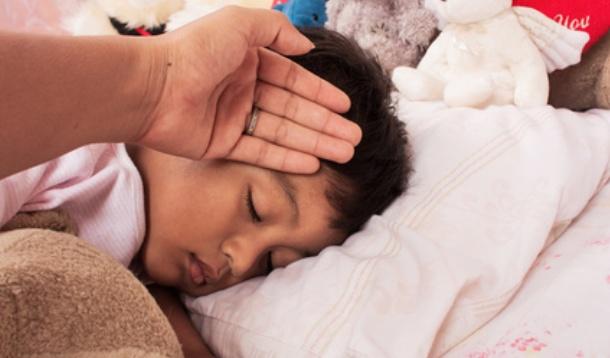
I don’t like to dispense parenting advice unless I’m asked a direct question, but there is one tip I’ll gladly dish out to just about anyone. It’s this: always, always, always have barf buckets in your car. Why do I know this? Because when you’re on a 16 hour drive with not one but two kids who have strep throat, you’ll probably need barf buckets. Repeatedly. Similarly, stash a few under your kids’ beds because if you have two kids sick at home with strep throat, they both might be too weak to make it to the bathroom. Who knew nausea was a common side effect of strep throat?
I’ll never forget the first time it swept through our house. The kids were little – 4 and 6 at the time – and one morning, both complained of a sore throat. I didn’t think too much of it until they rapidly declined. Within a few hours, they had fever, nausea, swollen lymph nodes, were absolutely exhausted and had completely lost their appetites. The curious thing was that neither had a cough or runny nose. I had no idea what was wrong.
I asked several friends who had a little more experience than me with sick kids and got the same advice all around: go to the doctor. We did; she took a throat swab and after about 30 hours of anxious waiting, we learned both kids had strep. Thankfully our doctor had given us prescriptions for antibiotics so when her office called with the positive test result, I went to the pharmacy right away. Within 24 hours, the kids were feeling much better and were safely able to go back to school.
I learned a lot about strep in the five or so years in which my kids had it several times. I know, I said I don’t dispense advice, but here you go:
Experts advise that strep will likely clear up on its own after about 4 days, even without antibiotics, but if you’re not averse to them, antibiotics will certainly speed up recovery and have your patient feeling better in about 24 hours. Even though your child may be feeling better, the other benefit of antibiotics is that they’ll reduce transmission of the bacteria to others and they can prevent complications.
What complications, you might ask? It turns out that group A streptococcus (GAS) is a very common bacteria. Many people carry it in the throat or on their skin without getting sick. It is not only the cause of strep throat; it and can also cause impetigo (which my son had once; it was unpleasant), scarlet fever and rheumatic fever. In rare instances, GAS will cause more serious illnesses, including pneumonia, meningitis, blood poisoning (bacteremia), streptococcal toxic-shock syndrome and flesh-eating disease. That’s why we chose to go the antibiotic route every time our kids tested positive for strep. It’s important to remember that, as with any antibiotic prescription, be sure to finish the entire prescription, even if your child is feeling better, to reduce the change of antibiotic-resistant bacteria developing.
What happens if you decide to follow the “wait and see” approach? Without antibiotics, strep throat will eventually get better on its own but in the meantime, the bacteria can spread to the heart, kidneys and bloodstream, causing the aforementioned complications. It’s also really important to be vigilant even after a bout of strep has cleared up, as there can also be subsequent unexpected neurological complications.
Is recurring strep a more serious problem? It can be. If a child has six or more severe throat infections in one year, your doctor might suggest a tonsillectomy. Kids can still get strep throat after having their tonsils removed. But for some children with recurring strep throat, a tonsillectomy can reduce the frequency and severity of strep throat infections. In our family’s case, our doctor warned us of the possibility of tonsillectomies down the road but also suggested patience and sure enough, our kids, like many others, stopped having strep throat as they got a bit older.
My last piece of advice from the trenches? Strep is highly communicable. As with all illnesses, make sure you all practice good hand washing habits AND you don’t share hand towels. Even more importantly, don’t share the same tube of toothpaste! That one took us a while to figure out. I think it was the third, or maybe the fourth time both kids had strep that the lightbulb turned on. Now, everyone in our house has their own tube and I am convinced it’s kept us from sharing a lot of germs.
![]() RELATED: Why Strep Infections Just Got Scarier
RELATED: Why Strep Infections Just Got Scarier